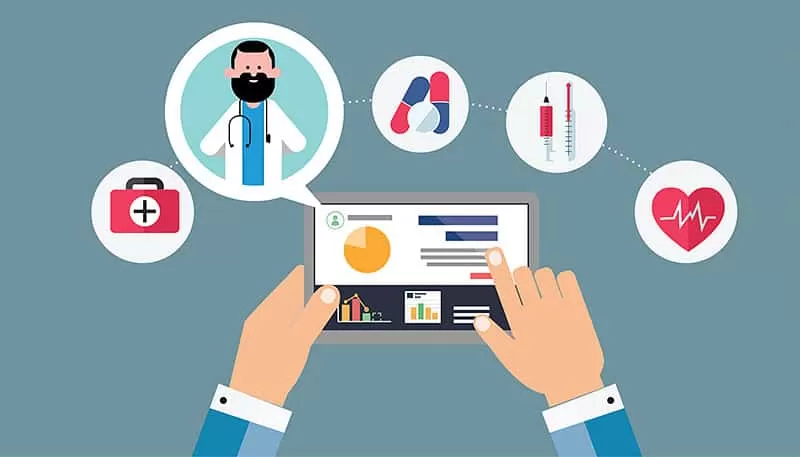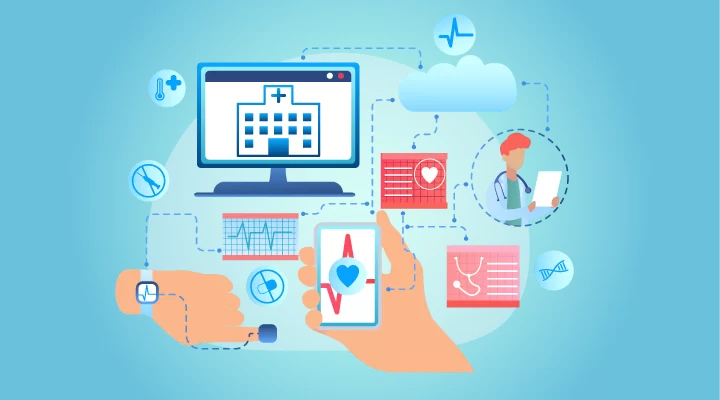The interoperability is placed at the heart of his vision for the NHS (UK) and it’s been of high priority for over the decade in president’s administration of US.
So is the long-standing nut of information sharing between systems about to be cracked?
Whether checking in a new patient, delivering vital clinical information at the point of care, or teaming with third-party services, healthcare providers and payers must integrate a diverse set of systems to operate effectively.
To achieve the improvement needed for value-based care, healthcare providers and payers face several data hurdles, including regulatory compliance and industry standards, outdated healthcare IT systems, and managing the complexities of mergers and acquisitions.
British secretary of state for health and social care Matt Hancock has made it perfectly plain what he wants to see in the realms of NHS IT – and interoperability is right at the heart.
Outdated and obstructive digital systems will become a thing of the past, he has frequently stated. A set of standards will be the order of the day, to ensure systems can speak to one another. Indeed, he has said such standards will be mandatory.
It would be easy to react with cynicism to Mr. Hancock’s vision which, after all, is hardly revolutionary.
In this article, we will try to check how close is he to the truth, what is the current state of interoperability in UK healthcare, and also will try to check on updates from the other side of the Atlantic Ocean to see what’s the USA have in store on this matter.

A nut about to be cracked (In Britain)?
So is the interoperability nut about to be cracked – and what will be necessary to make it finally happen?
For GP and IT leader Amir Mehrkar, the big change that is needed is less about the process and more about values. “For the NHS, I don’t believe the challenge of interoperability is technical. The technology exists – across the world, information is flowing,” he says.
“But I don’t think we in the NHS often think about the values around information sharing. Values are intrinsic to the way that we [as humans] behave but one of the problems has been that sharing patient information isn’t seen as an obvious value.”
Mehrkar is co-founder and co-chair of INTEROPen. The organisation brings together the NHS, industry and other stakeholders to work collaboratively on accelerating the development of open standards in the health and care sector.
As a practising GP with a burning interest in how IT can help clinicians and patients, he had felt there was a need for a forum where different stakeholders could get together in an open way to drive forward the interoperability agenda.
The board – which includes representatives from national organisations including NHS Digital, standards bodies and NHS England, as well as vendors and the health service – meets each month to discuss ideas and projects.
How the Things Are across the Ocean?
The organization of the U.S. Healthcare System is anything but centralized. This can be seen in evaluating the Financing and Stakeholder sections of the health system triangle. Financing of health care comes in many forms. There are public programs, also known as welfare programs, which are funded by the government through taxation.
Medicare, Medicaid, the Veterans Affairs, and Indian Health Services are just a few examples of these public programs. Because there is a mixture of payers, providers can opt to participate in a mix of these programs resulting in ‘preferred provider’ networks and physicians that are ‘out-of-network’.
There are private health insurers, which are usually employer-based, as well as government-funded welfare programs. As a result of this patchwork, the organization of the U.S. Healthcare System is described as a mixed market.
In this mixed market, healthcare is a privilege and patients are described as consumers because they consume the healthcare products and services. In a more traditional sense of the role of consumer, U.S. patients also play the role of ‘payer’ in that they share the cost of healthcare with insurers through co-pays and deductibles.
But the brunt of the cost is taken on by third-party payers. On the provider side, they can be self-employed or work for a government program and/or participate in providing care for private and/or public programs. Providers can also opt to take no insurance programs and all their services are paid ‘out of- pocket’ by the patient. This, however, is the exception and not the rule.
This brief look at healthcare in the U.S. through the Healthcare System Lens shows just how complex and fragmented the U.S. System is with multiple payers, out-of-network services, and unknown coverage for primary care provider referred services. The last of which can be a shot in the dark without due diligence by the patient/consumer. And let us not forget that the due diligence is required on the part of the patient, who is seeking medical treatment when they are not feeling well, or maybe incapacitated due to the dramatic injury.
The structure of healthcare may not be such a complex problem for policy wonks and the macro institutions of healthcare such as insurance companies and large health systems. These institutions have software with algorithms to protect their interests. But for the patient, their decisions can have devastating financial consequences.

Back to Britain: On FHIR
INTEROPen’s role in coproducing FHIR profiles is an example of the positive work that’s going on, he believes. “I’m excited by the people who have put their organisational labels aside and want to join together to do the right thing,” he says.
Neill McAnaspie, solutions director at IMS Maxims, believes that INTEROPen is a big part of the reason for the advancing of the interoperability agenda.
“I think there’s been a huge amount of progress [on interoperability] in the last year and INTEROPen is leading from the front,” he says. “For the first time we have an organization leading on the development of open standards and there’s a lot of industry buy-in.”
Anne O’Hanlon, solution consulting director at Orion Health, believes that greater collaboration actually encourages innovation. She says there is a growing recognition that working together and sharing information does not lead to companies losing their competitive edge – quite the contrary.
“I think there’s a realization that all of our software works better when it’s plugged into other vendors’ software,” she says. “The market is big enough for everyone.”
Cerner – Being open and interoperable unlocks excellent patient experiences
She believes that getting to the point where interoperability is a given, with everyone working to the same standards, will create a level playing field and encourage innovation. “I’m very excited by the vision that Matt Hancock has set out,” she says.
The need to deliver on open standards is not the only barrier to be overcome to make interoperability a reality. Most agree that it would be easier to start with a blank sheet rather than the current situation that sees organizations tied to legacy systems and outdated infrastructure that might – or might not – contain data relevant for today’s care.









